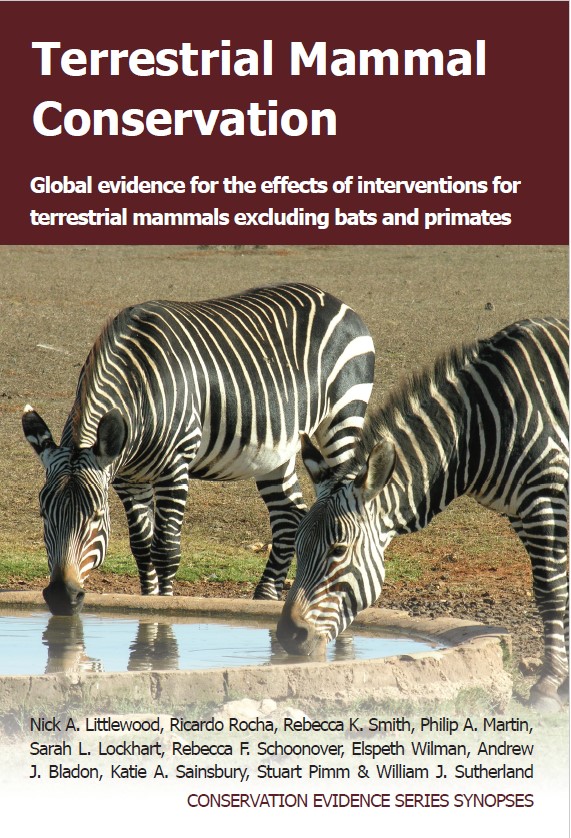Fell trees in groups, leaving surrounding forest unharvested
-
Overall effectiveness category Unknown effectiveness (limited evidence)
-
Number of studies: 3
View assessment score
Hide assessment score
How is the evidence assessed?
-
Effectiveness
40% -
Certainty
30% -
Harms
0%
Study locations
Supporting evidence from individual studies
A replicated, controlled study in 1994–1997 of Douglas-fir Pseudotsuga menziesii forest in British Colombia, Canada (Klenner et al. 2003) found that felling groups of trees within otherwise undisturbed stands increased southern red-backed vole Myodes gapperi abundance in some years relative to clearcutting but did not increase abundances of three other small mammal species. There were more southern red-backed voles in the third and fourth year after felling in group cut stands (7–14/stand) than in clearcuts (0.3–0.7/stand) but similar numbers between treatments in the first two years (group cut: 27–51/stand; clearcut: 13–34/stand). There were no differences between treatments for deer mouse Peromyscus maniculatus (group cut: 2–13/stand; clearcut: 6–21) or northwestern chipmunk Tamias amoenus (group cut: 1–8/stand; clearcut: 0.3–6/stand). There were fewer meadow voles Microtus pennsylvanicus in 20% group cut stands (1–3/stand) than in 50% group cut stands (0.8–4/stand) or clearcut stands (3–14/stand). Forest stands (20–25 ha) were partially harvested in winter 1993/94. Two each had 20% volume removed by cutting patches of 0.1–1.6 ha and 50% volume removed by cutting patches of 0.1–1.6 ha. Abundances across these stands were compared with that in two clearcuts of 1.6 ha. Small mammals were sampled by live-trapping at 2–4-week intervals, from May–October in 1994, 1995, and 1996 and from April–May 1997.
Study and other actions testedA replicated, site comparison study in 2006 in four forest sites in British Columbia, Canada (Ransome et al. 2009) found that harvesting trees in 1 ha blocks did not result in higher small mammal abundance compared to clearcutting large areas. The average number of red-backed voles Myodes gapperi caught in 1-ha cuts (19.0 individuals) was not significantly different to that caught in clearcuts (8.4 individuals). Numbers caught also did not differ significantly between felling types for dusky shrew Sorex monticolus (1-ha cuts: 34.0 individuals; clearcuts: 44.3 individuals), deer mouse Peromyscus maniculatus (1-ha cuts: 9.6 individuals; clearcuts: 11.6 individuals) or common shrew Sorex cinereus (1-ha cuts: 7.3; clearcuts: 7.0). A 1-ha area was harvested in each of four sites. These were compared with two large (>30 ha) clearcut areas. Trees were harvested in 1992–1993. Small mammals were live-trapped every three weeks in June–October 2006 (five sessions). Traps were operated for two nights and, if daytime temperatures were ≤25°C, the intervening day.
Study and other actions testedA study in 2003 of a forest in Worcestershire, UK (Trout et al. 2012) found that when trees were felled in large groups with surrounding forest unaffected, there was less damage to artificial hazel dormouse Muscardinus avellanarius nests than when trees were felled in small groups or thinned throughout. A lower proportion of artificial nests was damaged during large group felling (31%) than small group felling (62–66%) or thinning (73%). Non-native Corsican pines Pinus nigra were cleared from one third of the area of each of four plots (3 ha each) in a forest undergoing restoration to ancient woodland vegetation. Plot treatments, executed in late autumn/winter 2003, were clearance of small groups (12–14 trees) using chainsaws, clearance of small groups using a mechanised harvester, thinning throughout using a harvester and large group fells (c.0.4 ha each) using a harvester. Artificial dormouse nests comprised spheres of florists’ “oasis” (7–10 cm diameter) on the ground mimicking natural nests.
Study and other actions tested
Where has this evidence come from?
List of journals searched by synopsis
All the journals searched for all synopses
This Action forms part of the Action Synopsis:
Terrestrial Mammal Conservation
Terrestrial Mammal Conservation - Published 2020
Terrestrial Mammal Conservation





)_2023.JPG)














